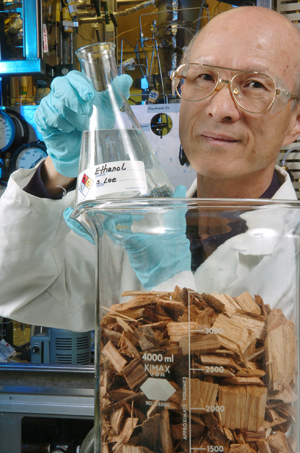 |
Transportation Technology R&D Center |
High-Pressure Distributed Ethanol Reforming
BackgroundLiquid ethanol, a bioderived renewable fuel, is attractive for its high energy density and ease of transport. Hydrogen produced by ethanol reforming must be purified and compressed to appropriate storage and dispensing pressures. Compressing hydrogen, however, is energy intensive and can consume a significant proportion of the fuel’s heating value. One promising option for producing pressurized hydrogen from ethanol is to perform the ethanol steam reforming reaction at high pressure. Challenges, however, accompany pressurized reforming. Calculations of thermodynamic equilibrium predict that high-temperature reforming will lead to lower hydrogen and higher methane yields. Also possible is an increased tendency for the formation of coke deposits, which interfere with catalyst performance. Argonne’s ResearchArgonne researchers are investigating ways to overcome the challenges of high-pressure ethanol reforming. To identify suitable conditions, they are examining preferred catalysts, higher temperatures and the steam-to-carbon molar ratio, and hydrogen separating membranes. Accomplishments to date include:
Because injecting liquid feeds into a pressurized reactor requires very little energy, it is advantageous to conduct the hydrogen production step (reforming) in a pressurized reactor, thereby producing hydrogen at high pressure and reducing the energy lost in compressing the hydrogen. Producing hydrogen at high pressure would also offer flexibility in the selection of hydrogen purification/separation technologies. More-compact systems (for greater reactivity) and higher driving forces for pressure-based separation and purification systems are additional expected advantages. If the initial results from the pressurized reforming in a membrane reactor are promising, the concept may be demonstrated at the pilot scale in collaboration with industrial partners. Successful high-pressure distributed ethanol reforming will expand hydrogen production options and help develop capabilities critical for progress toward reduced reliance on fossil fuels. This work is funded by the Hydrogen, Fuel Cells and Infrastructure Technologies Program of the DOE Office of Energy Efficiency and Renewable Energy. April 2008 |
|
|||||
|
||||
